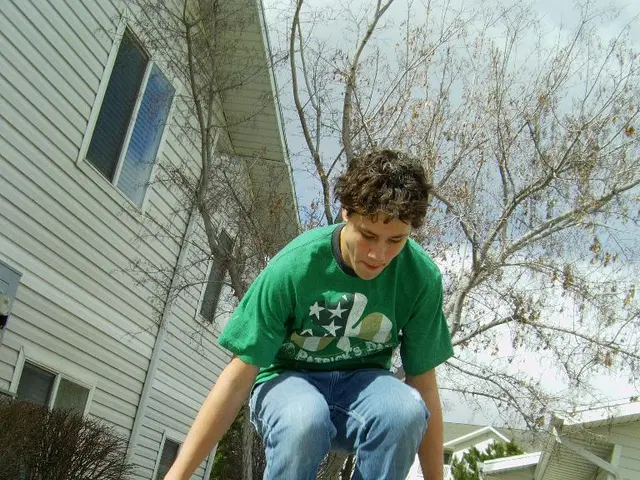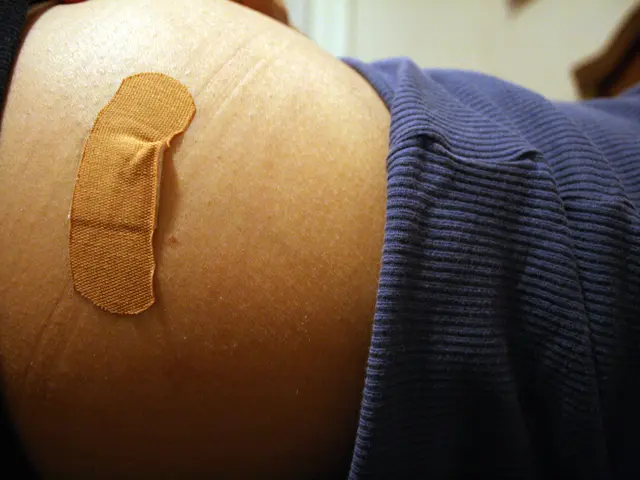Possibility of Famine Looming over Gaza Strip: Could Palestinian Territory Face Starvation?
In the midst of a two-month blockade, Gaza desperately cries out for aid, yet the Ministry of Foreign Affairs claims there's no scarcity of humanitarian aid within this troubled enclave. The international community and countless NGOs, however, maintain that the aid delivery is completely hindered, with the specter of famine looming large. But, what's the reality?
With supplies and food ceasing to flow into Gaza, the situation is becoming dire. As the reserves of essential items like sugar and lentils dwindle, prices have skyrocketed to unreachable levels: a 400% increase for sugar, and a staggering 740% for a 2kg packet of eggs compared to late February 2025. The population is struggling to find enough food to sustain themselves.
Bracing for Disaster: The Hunger Pandemic
Our site
Amid this crisis, Gazans are left with no other choice but to rely on the humanitarian aid that was distributed before the blockade. Antoine Renard, the World Food Programme's representative in Palestine, confirms that "only 257,000 people are receiving a hot meal," a meager soup with lentils, sold as a hot meal since there's hardly any flour left for bread due to the scarcity.
The Integrated Food Security Phase Classification (IPC) has quantified the perilous situation in Gaza, classifying it as being at an "extremely high risk of famine." As many as 44% of its 2.1 million inhabitants are currently in an emergency situation, with 12% teetering on the brink of catastrophe[1][2].
Le Monde
The Truth in Numbers: The IPC's Verdict
According to the IPC's latest study, published in May 2025, the projected malnutrition numbers in Gaza are alarming: an estimated 71,000 children under the age of five, and more than 17,000 mothers will require immediate treatment for acute malnutrition over the coming months[2]. Aid, despite the urgency, is unable to reach the population due to the ongoing conflict and blockade, resulting in severe humanitarian consequences[2].
France 24
Despite the crisis, there's been little official recognition of the impending famine in Gaza. The IPC has classified the situation from May to September 2025 as "Emergency" (IPC Phase 4), with the entire population set to face severe food insecurity[3][5]. While the situation has yet to be officially declared as a famine, the risk is sky-high, and swift action is needed to prevent further deterioration[1][2].
Sources:Our Site | Le Monde | France 24
World Food Programme
Studies:- "Gaza Market Monitoring, April 2025" by the World Food Programme- "Special Overview of Food Insecurity and Acute Malnutrition in the Gaza Strip" by IPC (Integrated Food Security Phase Classification)
Note: Due to the limited word count, essential information had to be condensed for brevity. For a more detailed understanding, please refer to the original article and its sources.
"Special Overview of Food Insecurity and Acute Malnutrition in the Gaza Strip" by IPC (Integrated Food Security Phase Classification)
Enrichment Data:- The Risk of Famine: The risk of famine in Gaza is extremely high, with three-quarters of the population at either "Emergency" or "Catastrophic" levels of food insecurity[1][2].- IPC Classification: According to the IPC, the situation from May to September 2025 is expected to be an "Emergency" (IPC Phase 4) for the entire population, with the risk of famine remaining very high[3][5].
- In the face of the escalating hunger crisis in Gaza, the World Food Programme's representative in Palestine, Antoine Renard, states that only a quarter of a million people are receiving a meager soup as their daily meal due to the lack of supplies and resources.
- The Integrated Food Security Phase Classification (IPC) has classified Gaza as being at an "extremely high risk of famine," with 44% of its population in an emergency situation, and 12% on the brink of catastrophe.
- The IPC's latest study predicts that over 71,000 children under the age of five and more than 17,000 mothers in Gaza will require immediate treatment for acute malnutrition in the coming months, as aid remains unable to reach the population due to the ongoing conflict and blockade.
- Despite the impending humanitarian catastrophe, the situation in Gaza has received little official recognition, with the International Community, NGOs, and various news sources like Le Monde and France 24 urging for swift action to prevent further deterioration and possible famine.








